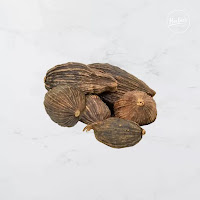
Episodes

Sunday Aug 04, 2024
Take Care of Trees on Real World Gardener pt 1
Sunday Aug 04, 2024
Sunday Aug 04, 2024
Host Marianne talks with arboriculture consultant Glenice Buck about the first steps in managing the health of your trees.

Monday Jun 26, 2023
Mushroom Plant on Real World Gardener radio show
Monday Jun 26, 2023
Monday Jun 26, 2023
KITCHEN GARDEN SEGMENT on REAL WORLD GARDENER radio show
Scientific Name: Rungia klossii
Common name: Mushroom plant
Family: Acanthaceae
Origin: New Guinea
Rungia klossii is an evergreen Perennial growing to 0.6 m x 0.6 m at a medium rate.
Soils: Suitable for: light or sandy, medium (loamy) and heavy (clay) soils.
Habitat: Mushroom plant can grow in semi-shade but not full sun in an Australian summer. It prefers dry or moist soil if grown in the ground otherwise growing in a pot is very successful.
Description:The shiny mid green have a yellowish mid-rib.
The elliptic leaves are arranged in pairs with adjacent pairs perpendicular to one another (decussate leaf arrangement mush like in a hydrangea).
Flowers: Blue flowers that appear in a cluster in ideal positions.
proteins.
Harvesting: The Mushroom plant can be harvested all year round, but the best is to harvest during the active growth period to provide a bushy growth.
Uses: In the kitchen it's used in salads, soups and wok dishes, a small cooking even increases the mushroom aroma.
Frosts: Low frosts are tolerated but lead to leaf loss.
Fun fact: Higher in protein that actual mushrooms.
What is it exactly and why is it called mushroom plant.
Let's star with, how do you love your mushrooms?
In a risotto, sautéed with scrambled eggs, in soups or salads?
Perhaps you don’t like them at all.
Here’s a way to enjoy the taste without the texture and it’s all natural.
The leaves are somewhat stiff and lightly curled at the tip.
Yes, the leaves taste like mushrooms with a crispy texture and nothing more.
| Rungia klossii: Mushroom plant |
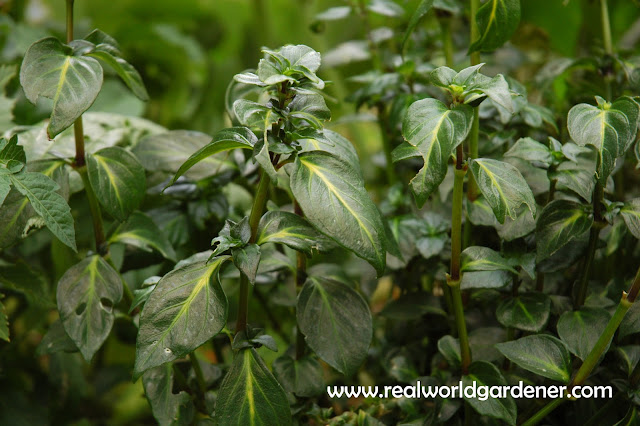 |
| Mushroom plant Photo: M Cannon |
So, let’s find out how and why, by listening to the podcast.
I've been talking with Corinne Mossati, founder of the gourmantic garden. ///thegourmanticgarden.com/
Corinne's favourite use of the plant is finely chopped into salads for that burst of flavour.
Mushroom plant is a perennial that although it grows well in tropical and sub-tropical areas, it needs protection from frost in cooler climates.
The best way to grow it there is in a pot, which by the way, has served me well over the years.
If you have any feedback email realworldgardener@gmail.com or write in to 2RRR PO Box 644 Gladesville NSW 1675

Monday Feb 06, 2023
Growing Dwarf Beans in the Kitchen Garden on Real World Gardener
Monday Feb 06, 2023
Monday Feb 06, 2023
KITCHEN GARDEN
Beans and More Beans
What is your favourite warm season vegetable or are there too many to choose from?
Top of the list for many a gardener is the humble bean, because in warm weather, they’re so easy to germinate.
In fact my bean crop was directly sown on a Monday and they were up by Thursday.
But how do you get a continuous crop of beans?
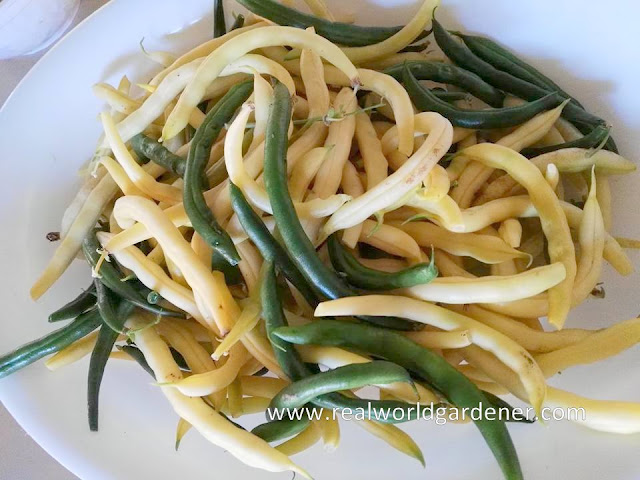
Corinne mentions bush beans, but we're not talking some sort of wild bean that grows on a bush, in fact bush beans is another name for dwarf beans.
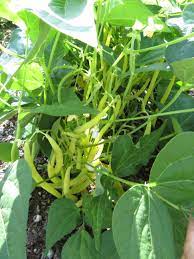
This year I planted my bean seeds closer together than normal on using the premise that if we had a run of cloudy days and they started to climb, they would support each other.
This season we did have lots of cloudy rainy, days, they didn't start to climb, but did in fact support each other at around 50-60cm.
The only tricky part was needing to carefully pick your way through the thicket of bean foliage to harvest the beans without breaking any branchlets.
.jpg)
I’m speaking with Corinne Mossati founder of //thegourmanticgarden.com
- Sow another crop in 6 weeks time after the first crop then the big tip is after the first harvest, apply a side dressing of blood ‘n’ bone.
- Beans should be ready to harvest as soon as 65 days or 9 weeks after planting
If you have any questions why not email us at realworldgardener@gmail.com or write in to 2RRR PO Box 644 Gladesville NSW 1675

Monday Feb 06, 2023
Vietnamese Mint in the Kitchen Garden on Real World Gardener
Monday Feb 06, 2023
Monday Feb 06, 2023
KITCHEN GARDEN
Is Vietnamese mint really a mint?
Scientific Name: Persicaria odorata
Common Name:Vietnamese mint
Family: Polygonaceae
True mints botanically speaking have wide spreading underground rhizomes with erect, square and branching stems.
The leaves are opposite each other on those square stems, with clusters of small tubular flowers.
Ture mints are also in the Lamiaceae family.
So what do we make of Vietnamese mint?
Perhaps you saw it in the herb section of the garden centre and mistook it to be just like any other mint.
Not exactly a real mint and it's also in the same family as rhubarb and buckwheat; the Polygonaceae family.
Traditionally, Vietnamese mint is used a lot in Asian cuisine. If you've ever had a laksa, you've probably eaten some Vietnamese mint.
What does it look like?
It looks similar but different to traditional mint, plus it's a creeping herbaceous perennial.
The leaves are very narrow and angular looking often with a chestnut-coloured rounded marking across the dark green leaf.
The flowers are quite different to min. Flowers are flat spikes of pale lavender if you're in a warm enough climate for it to flower.
Where and How to grow it.
- It can grow very well outside in summer in non-tropical parts of Australia.
- Vietnamese mint prefers part-sun and well-drained soil.
- For those areas with cool to cold winter, bring your Vietnamese mint indoors or under shelter as you would an indoor plant.
- It grows very well in pots but is frost tender.
Let’s find out how to use it in cooking by listening to the podcast.
I'm speaking with Corinne Mossati founder of the gourmantic garden website and blog.
Also sometimes called Vietnamese coriander and as Corinne mentioned you can make a dipping sauce or even try making pesto with it.
If you have any questions why not email realworldgardener@gmail.com or write in to 2RRR P.O. Box 644 Gladesville NSW 1675.

Sunday Oct 30, 2022
Grow, Harvest, Eat Yacon on Real World Gardener
Sunday Oct 30, 2022
Sunday Oct 30, 2022
THE GOOD EARTH
How to Grow and Use Yacon: Peruvian Ground Apple
Scientific Name: Smallanthus sonchifolius
Common Name: Yacon, Peruvian ground apple
Family: Asteraceae-same as daisies and sunflowers.
Plant Height & Width: 1.5m x 0.5m
If you look at the flowers they are like much smaller versions of sunflowers.
Here’s a tuber that tastes similar to a nashi pear, looks something like sweet potato on the outside, and the sugars from it aren’t absorbed by the body.
Not only that, the tubers contain a lot of juice, and the sugars that make it sweet is not absorbed by the body so you can't put on the kilos! How good is that?
Then there’s the fact that it’s easy to grow, and has small flowers that resemble sunflowers and you just can’t buy it from the supermarket or fruit and veg store.
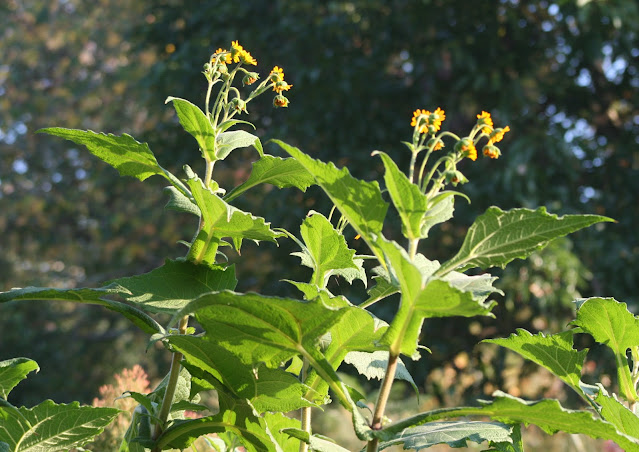 |
| Yacon plant growing in Margaret's garden |
How to Grow Yacon from Tubers?
Yacon has two types of tubers unlike ginger or turmeric.
- The tubers that you plant are attached to the main stem and are much smaller and pinkish in colour. I planted mine in early September and October was the time that it sprouted in my Sydney garden.
- If you were to receive some brown tubers that look like a brown sweet potato, that's what you eat and not what you plant.
- The edible tubers spread from the clump sideways meaning you need at least 1/2 metre of space to produce sizeable clumps.
- Can be planted in any district as they can withstand frost.
When to Harvest?
Yacon is a herbaceous perennial meaning it has a dormant period that starts when the leaves die down in late autumn.
This is the time when the tubers are ready to harvest. Simply fork up the entire crop, and harvest the large brown tubers to eat fresh, and use the small reddish rhizomes at the top to replant for next year’s crop.
What Can You Do With Yacon?
Eat it of course but how, is the thing so here are some of Margaret's tips.
- Yacon is sweet and crunchy and is great eaten fresh.
- Ever heard of Yacon chips? That's right you can make chips out of this tubber.
- Just cut up into chip sizes and drizzle some oil over the top and bake in the oven.
- Try using it in salads like Waldorf salad and wherever you would use fresh pears.
- Use it in stir fries.
- You can also juice it or cook down the juice to make syrup and use it as a sweetener.
Fun Tip from Margaret
- Running short of toilet paper, try large soft fluffy leaves like those of the Yacon plant.
But there's more uses, have a listen to the podcast.
I'm talking with Margaret Mossakowska of www.mosshouse.com.au
If you have any feedback email realworldgardener@gmail.com or write in to 2RRR PO Box 644 Gladesville NSW 1675

Sunday Oct 30, 2022
Flowers Have Their Seasons on Real World Gardener
Sunday Oct 30, 2022
Sunday Oct 30, 2022
TALKING FLOWERS
Seasonality of Flowers
Vegetables have their season when they’re available fresh and not just out of the cold room where they’ve been for 6 months or more.
What about flowers?
Many people forget that flowers have their seasons too, after all there are plenty of flowers available all year round.
 |
| Hellebores-a winter flower |
If I asked you what’s the best time of year to buy peonies would you know?
What about roses, is there a best time?
Winter Flowers

Spring Flowers
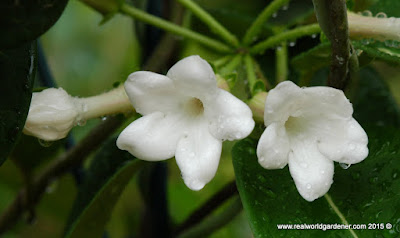 |
| Stephanotis |
Summer Flowers
Autumn Flowers
I'm talking with Nadine Brown of //www.theivyinstitute.com.au/
The scientific name for spring stars is Ipheion uniflorum, often marketed as Triteleia Stars Of Spring, rather confusingly.
Got to say one my favourite spring flowers.
If you have any feedback email realworldgardener@gmail.com or write in to 2RRR PO Box 644 Gladesville NSW 1675

Saturday Oct 29, 2022
Spice Up Food with Furikake on Real World Gardener
Saturday Oct 29, 2022
Saturday Oct 29, 2022
SPICE IT UP
Furikake: Japanese seasoning
Isn't it time you enlivened your tastes buds with something you've never tried before?
This next spice isn’t just one spice on it’s on but several spices or a blend of spices that are just right for Japanese food or any other food for that matter.

Furikake is a traditional Japanese seasoning that is sprinkled on cooked food.
In some ways like shichimi togarashi seasoning, furikake seasoning has not only toasted sesame seeds in it but also black sesame seeds that combine to give you a delectable nutty flavour.
But wait, will it have monosodium glutamate I hear you ask as so often spice blends in Asian cuisine do?
Well, here’s the thing, with 50 years of sourcing and mixing spice blends, Ian Hemphill is just the man to find a substitute for MSG without compromising the flavour of just such a spice blend
Fuikake also has the combination of salt, nori flakes or nagi, to add that classic Japanese profile when it comes to flavour. Also orange peel, Sichuan pepper and Australian lemon myrtle.
Furikake goes well with rice, on top of eggs, seafood and on top of white or red meat.
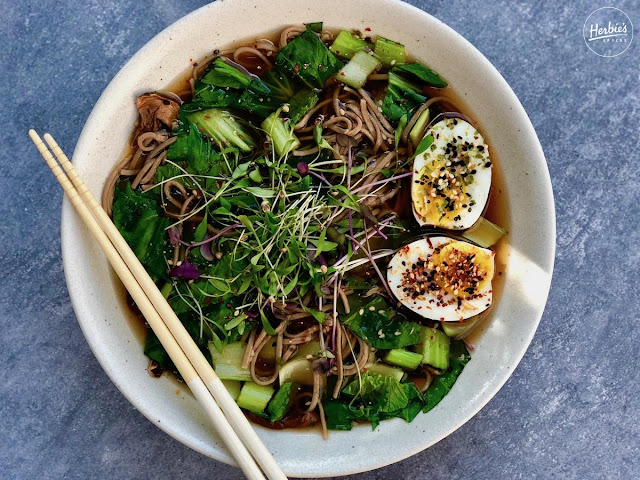 |
| Miso soup with furikake eggs. photo courtesy www.herbies.com.au |
Let’s find out more bout this fabulous spice.
I'm talking with Ian Hempill, owner of www.herbies.com.au
Ian has been a regular on RWG for many years but never has he admitted to carrying emergency spices in his pocket before.
Ian carries Furikake spice in his pocket in the off-chance he’s going to snack on some sushi.
How good is that? If you have any questions about spices why not email us at realworldgardener@gmail.com or write in to 2RRR PO Box 644 Gladesville

Wednesday Sep 21, 2022
Leaf Celery in the Kitchen Garden
Wednesday Sep 21, 2022
Wednesday Sep 21, 2022
KITCHEN GARDEN
Leaf Celery
Scientific Name:Apium graveolens var. secalinum

- Leaf celery is a biennial plant growing to 60cm in height.
Sugo For Sure-How to Make it
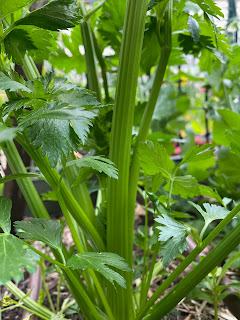
Then adding the garlic and tomatoes to make a tomato base for any Italian dish.
This winter I have practically depleted my supply of leaf celery because of the number of soups, and slow co
- Corinne suggests dehydrating the leaves to make celery leaf salt.
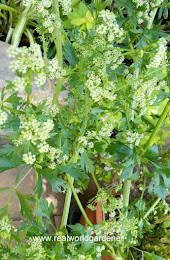 Chop the stems and leaves and make a compound celery butter.
Chop the stems and leaves and make a compound celery butter.
Much easier to grow too.
If you have any feedback email realworldgardener@gmail.com or write in to 2RRR PO Box 644 Gladesville NSW 1675

Sunday Sep 04, 2022
Cardamom in Cooking on Real World Gardener
Sunday Sep 04, 2022
Sunday Sep 04, 2022
SPICE IT UP
Know Your Cardamoms.
There are many budding chefs and cooks that use heaps of spices in their recipes going by the success of cooking shows on television.
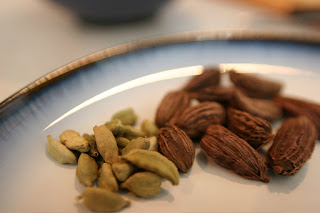 |
| Green and brown cardamom pods |
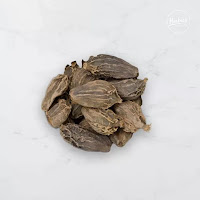 |
||
| Brown (black) Indian cardamom (right) |
Cardamom pods are one such spice that comes a variety of colours and suit different cuisines.
- So which one should you use?
Brown cardamom-Indian and Chinese
- The brown Indian cardamom is a much larger pod than the green cardamom by 4-5 times the size. This cardamom has a smoky aroma and is especially used in tandoori dishes.
- Chinese cardamom is usually used whole.
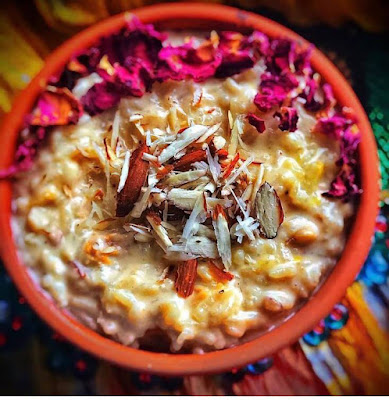
* Ian’s big tip is never grind the pods and seeds together.*
Marianne (host of Real World Gardener radio show) is Ian Hemphill from www.herbies.com.au
Hopefully that’s set you on the right path to using the correct coloured cardamoms in your cooking.
If you have any questions you can email us Realworldgardener@gmail.com or write in to 2rrr, PO Box 644 Gladesville NSW 1675.

Sunday Sep 04, 2022
Choosing the Freshest Flowers on Real World Gardener
Sunday Sep 04, 2022
Sunday Sep 04, 2022
TALKING FLOWERS
Tips on Choosing the Freshest Flowers
Do you regularly buy a bunch of fresh flowers to brighten up your home?
Sometimes I cringe when I see a bunch of flowers outside some supermarkets because I know what signs to look for that tell me whether or not they’re really fresh.
But could you tell how fresh a bunch of flowers are when you see them for sale?
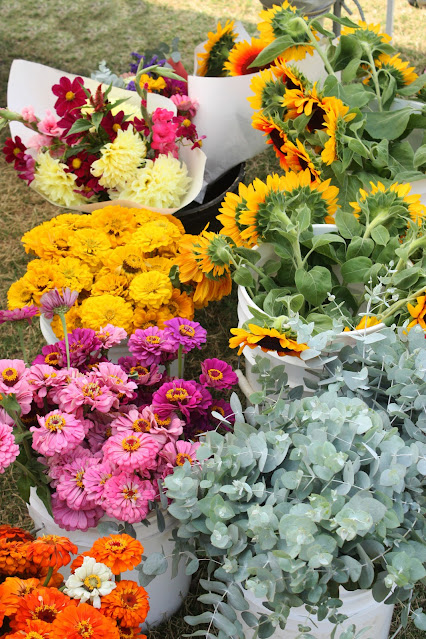
Some of the top tips are
- Keep your flowers away from the fresh bowl of fruit.
- Feel the stems to see if they’re fresh and not slimy.
- Avoid buying flowers from the roadside.
Don’t worry, Nadine Brown will tell us how lots more .
I'm talking with Nadine Brown floral educator of www.theivyinstitute.com.au
If you like buying fresh flowers you should listen to the podcast.
If you have any questions you can email us Realworldgardener@gmail.com or write in to 2rrr, PO Box 644 Gladesville NSW 1675.
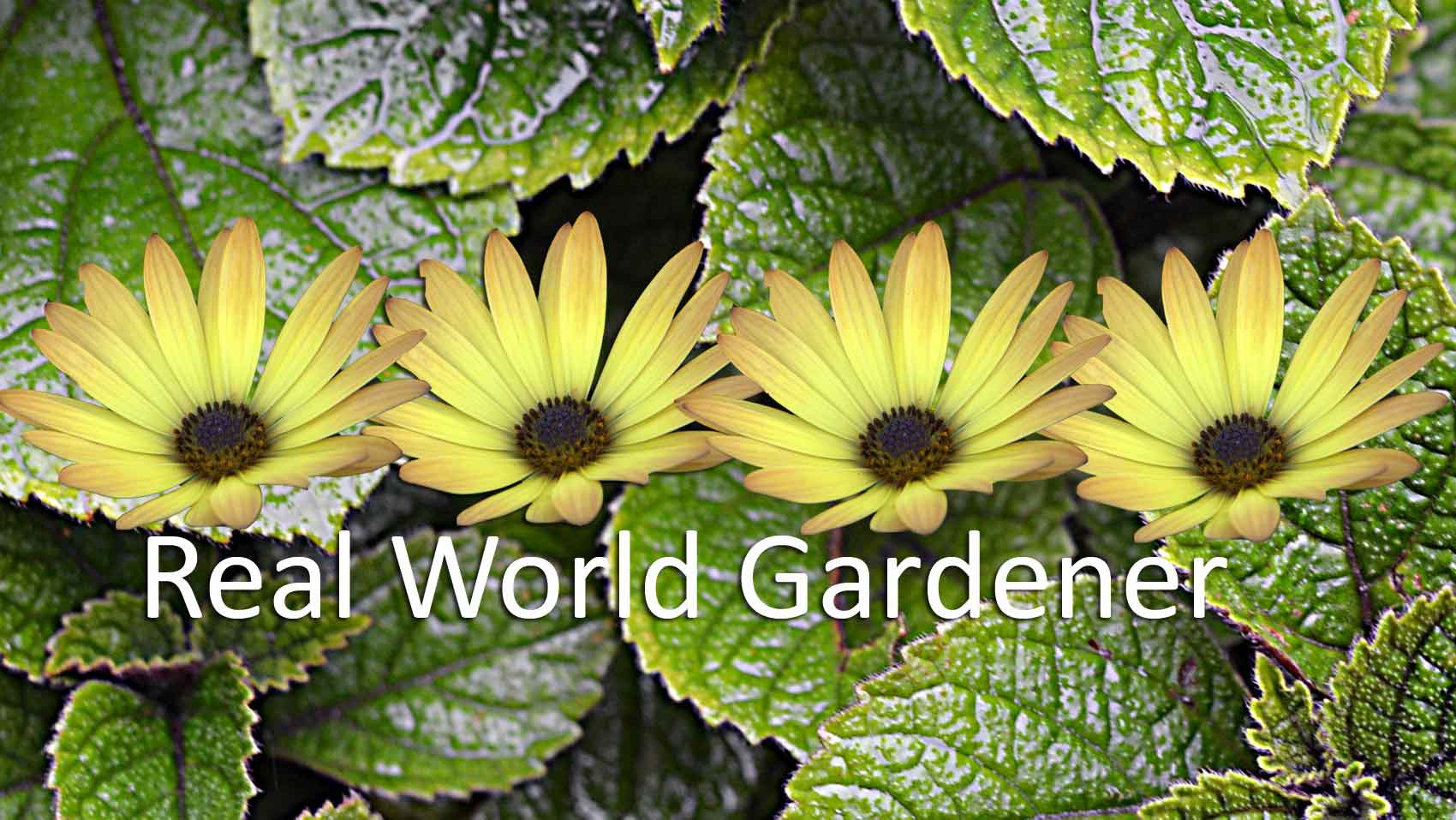
 Chop the stems and leaves and make a compound celery butter.
Chop the stems and leaves and make a compound celery butter.